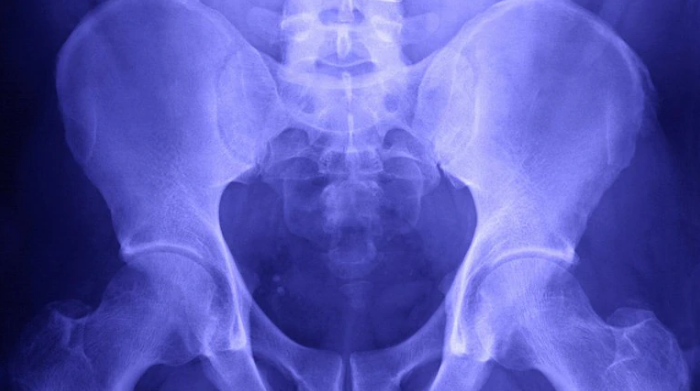லபடில்லா
For about 500 million years, our ancestors had tails. Like fish, they used it to swim across the Cambrian Sea. After a long time, as they evolved into fauna, their tails helped maintain balance as they ran from one branch to another through the ezine forests. But about 25 million years ago, the tails disappeared.
Issued by: Infobe
Charles Darwin was the first to notice this profound change in the anatomy of our ancestors. However, how and why it happened remains a mystery.
Now, there is a team of scientists in New York who claim to have discovered a genetic mutation that removed our tails. When scientists performed this genetic mutation in mice, the animals did not stand in line, according to a new study published online last week.
This dramatic anatomical change had a profound impact on our evolution. The tail muscles of our ancestors became a hammock-like loop across the waist. When the ancestors of man stood up and walked on two legs millions of years ago, that muscle shaft was ready to bear the weight of the erect limbs.
While it is not possible to confirm that this mutation clipped the tails of our ancestors, “this is very close evidence of what we can expect,” said Cedric Feshot, a geneticist at Cornell University who was not involved in the study. .
Darwin slandered the Victorian audience by claiming that we were descendants of tails. Although humans and monkeys do not have a visible tail, they share a small group of vertebrae that extend beyond the waist, called the coccyx.
“I have no doubt this is a basic tail,” he wrote.
Since then, paleontologists have unearthed fossils that illustrate this change. The oldest known animals are about 66 million years old and have fully developed tails that can be used to balance trees. Today, most living animals, such as lemons and almost all monkeys, still have tails. However, about 20 million years ago, when monkeys appeared in the fossil record, they had no tail.
Bo Xia, a graduate student in stem cell biology at the Grossman School of Medicine at New York University, asked, “This question – where is my tail?”
In 2019, a bad Uber ride, in which Xia injured his tail bone, reminded him of the urgency of the return. “It took me a year to heal and it really made me think about my tail bone,” he said.
To understand how monkeys and humans lost their tails, Xia looked at how tails are formed in other animals. In the early stages of fetal development, master regulators are set up to integrate different parts of the spine to develop unique qualities such as the neck or lower back. At the last end of the embryo, a tail cone arises, within which a special chain of vertebrae, muscles, and nerves is formed.
Researchers have identified more than 30 genes involved in the development of tails in a variety of organisms, from Iguana’s long whip to Manx cat tail. All of these genes are active in other parts of the developing embryo. Scientists are constantly learning how their unique function at the end of an embryo is to form a tail.
Xia discovered that our ancestors lost their tails when there were mutations in one or more of these genes. To search for these mutations, Xia compared the DNA of six species of monkeys to nine types of tail monkeys. Eventually, he discovered a mutation that monkeys and humans share – but not found in apes – in the gene TBXT.
TBXT was one of the first genes discovered by scientists over a century ago. At the time, many researchers were looking for genes to bombard animals, plants, and microorganisms with X-rays, believing that mutations could produce visible change.
The mutation discovered by Jia had not been noticed before. It contained 300 genetic characters in the middle of the TBXT gene. This stretch of DNA was almost identical in humans and monkeys and was inserted in the same place in their genes.
Xia finds her supervisors Idai Yanai and Jeff Boke to see what they think. “I almost fell out of my chair because it was an impressive decision,” Yanai recalled.
To test the notion of mutation in the disappearance of our tail, Xia and his colleagues were genetically engineered mice with TBXT mutation carried by humans. When these embryos develop, many animals do not develop tails. Others received only a short one.
Xia and her colleagues attacked a monkey approximately 20 million years ago, thus proposing that only a tail stump grows or nothing. However, the tailless animal survived and grew, sending the mutation to its offspring. Eventually, the mutated form of TBXT became commonplace today for monkeys and humans.
According to scientists, the TBXT mutation alone explains why we have a tail bone instead of a tail. Although the rats in the experiment produced a series of altered tails, our tail bones were almost identical from person to person. Other genes must then mutate to help create a harmonious anatomy.
Although geneticists are beginning to explain how our tails disappeared, scientists are confused as to why this happened.
The first monkeys were larger than the apes, and their increased size made it easier to fall off the branches, which were probably dangerous. It is difficult to explain why tailless monkeys help to balance.
In addition, losing a tail can present other risks. Xia and her colleagues not only reduce TBXT mutation tails, but also sometimes cause spinal deformities. Yet, somehow, losing the tail proved to be a huge evolutionary advantage.
(C) New York Times





:quality(85)/cloudfront-us-east-1.images.arcpublishing.com/infobae/USUBRFBK3JAUDKWZEIRN7ZP4WU.jpg)